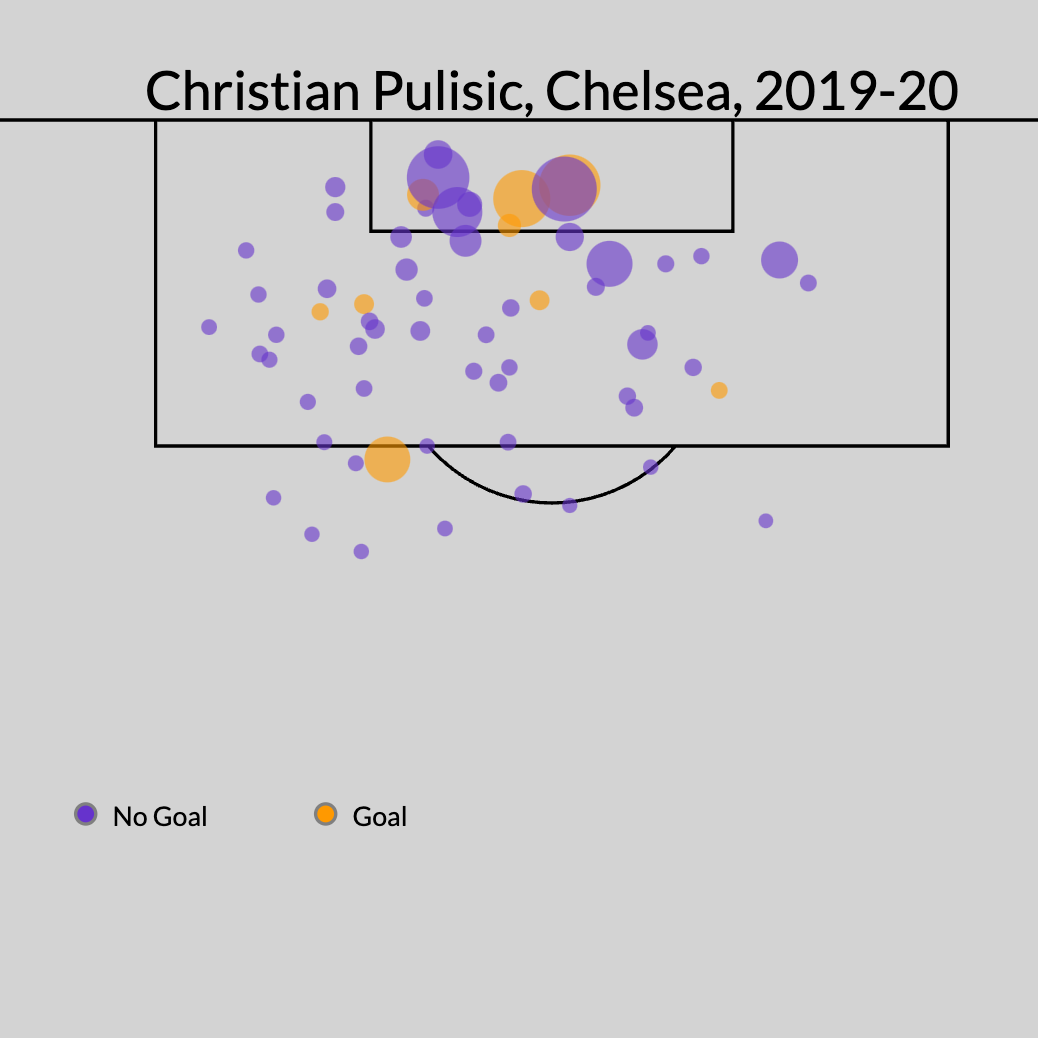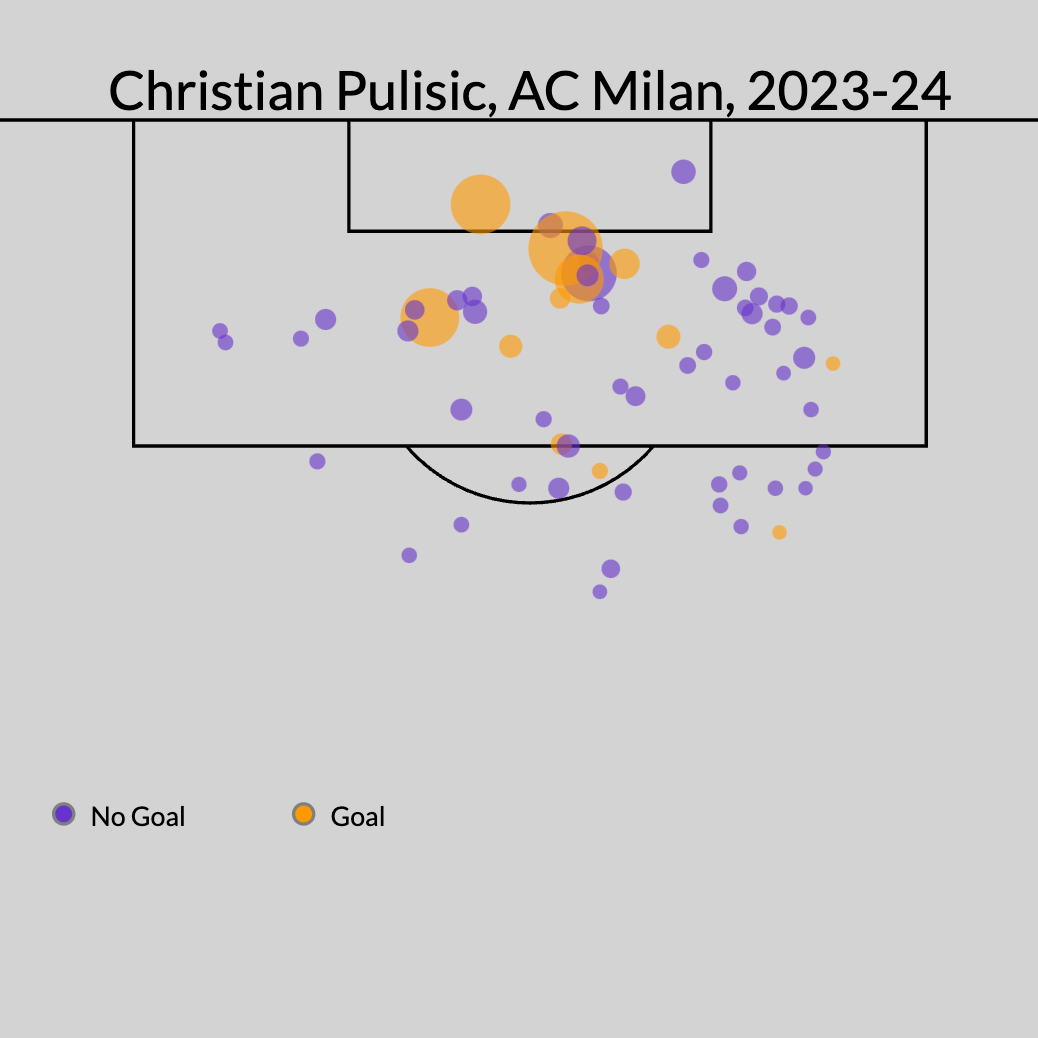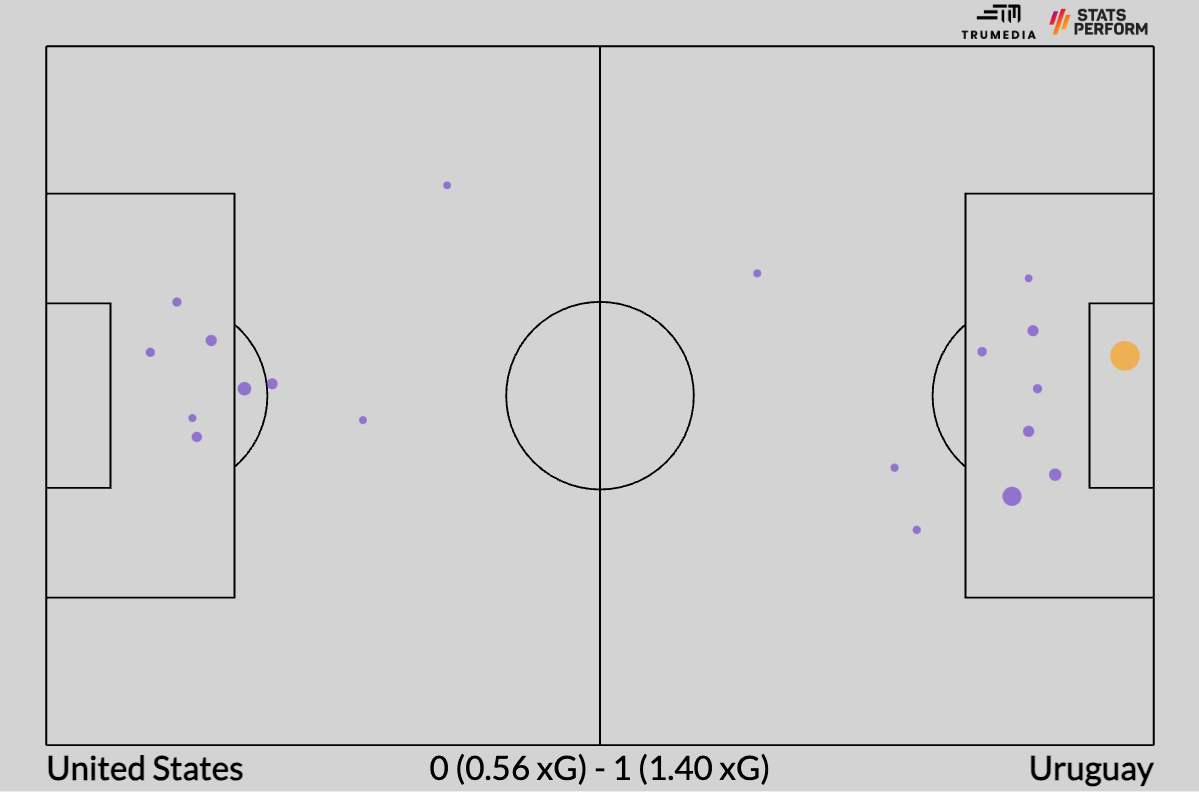It really seemed like they might do it.
The move started in their own half and lasted for nearly a full minute. It featured 13 passes of varying levels of intricacy, pushing the ball patiently forward, working it from left to right. An initial thrust toward goal was denied, possession cycled backward, but then just enough space appeared: A playmaker got on the ball on the half-turn between the defensive and midfield lines, slipped a through ball to the center forward, whose perfect first touch set up a cool finish past the keeper at the near post.
It's everything we've wanted from the United States for years: a team-wide ability to create chances out of patient possession, someone with the vision to make the right passes around the penalty area, and a striker who would make the right runs and finish his chances. It couldn't have come at a better time, either; it appeared the goal would push the Americans into the quarterfinals of the Copa América.
Unfortunately, the goal wasn't actually scored by the Americans. For two or three minutes in the second half on Tuesday, Bolívia had evened up the score with Panama 1-1, while the U.S. was still scoreless with Uruguay. Gregg Berhalter & Co. were going through! Until a Uruguay goal off a set piece, followed by two more goals by Panama, and ... disaster.
The U.S. came into the tournament with something like an 85% chance of advancing, and yet they just got dumped out of the Copa América in the group stages with a 1-0 loss.
But it's not even that, really. Weird stuff can happen in international tournaments -- even to the best teams. The bigger issue is the way they went out -- not just losing in a must-win game at home, but only attempting eight shots and not creating a single chance of note. Uruguay is a good team, but it's not France or Argentina.
Sure, there are plenty of questions about the coaching, but with two years to go until the World Cup and not another competitive game of real value before then, the USMNT's golden generation seems like it might be stuck.
The promise
Let's go back to, say, 2019 or early 2020. Simpler times for everyone, including the handful of young men who made up America's elite soccer talent.
At the absolute top, you had Christian Pulisic. After three successful teenage seasons with Borussia Dortmund, he made the move that should frighten any international fan base: he signed with Chelsea for €64 million.
Herculez Gomez explains the lack of success from the United States under Gregg Berhalter and why he might stay in charge despite another setback.
Rather than celebrating this massive fee paid to sign a 20-year-old American soccer player and what it might mean for the development of the sport in this country, or the financial well-being of the player, many fans worried about what this might mean for Pulisic's playing time and therefore his performance with the U.S. At a notoriously chaotic club that has no problem spending €50 million or more on players at the same position in consecutive transfer windows, would Pulisic have the same starting-lineup safety he had at Dortmund?
While he struggled with injuries, Pulisic was lights-out when he was on the field in his first season in England. He ranked second on the team in non-penalty goals+assists per 90 minutes (0.68) and had a legitimate case as the best player in the Premier League during Project Restart, the final period of the season played behind closed doors after the campaign was paused because of the COVID-19 pandemic. With Pulisic doing this at age 20, it really seemed like the U.S. might finally have its first superstar.
In the shot chart below, orange represents goals, and the size of the circle depicts the expected-goal value of the attempt:

And then, suddenly, it seemed like the U.S. might have two. A season later, Giovanni Reyna made 23 starts for Dortmund in his age-17 season, scoring five goals and adding four assists. Minutes at a young age are the best predictor of future success and at the end of the 2020-21 season, his was among the top five for career minutes played in the "Big Five" leagues among players born in 2002 or later:
1. Eduardo Camavinga: 4,883 minutes
2. Florian Wirtz: 2,595 minutes
3. Pedri: 2,428 minutes
4. Giovanni Reyna: 2,326 minutes
5. Jude Bellingham: 1,701 minutes
After a breakout campaign with Ajax Amsterdam in 2019-20, Sergiño Dest moved to Barcelona for €21m at the age of 19. Tyler Adams at 21 scored the winning goal in the 2020 Champions League quarterfinals for RB Leipzig and the following year played starter minutes for the team that finished in second place in the Bundesliga. Brenden Aaronson became a starter as a teenager for an FC Salzburg team that was consistently competitive in the Champions League. And in the so-called summer transfer window between the 2019-20 and 2020-21 seasons, Weston McKennie moved to Juventus, which had signed Cristiano Ronaldo a year prior and was coming off its ninth straight Serie A title.
Throw in Chris Richards and Timothy Weah, academy products at Bayern Munich and Paris Saint-Germain, respectively, and there was plenty to get excited about for a country that hadn't even qualified for the previous World Cup.
The reality
Of those eight players, not a single one has hit on his best-case scenario.
Pulisic never started more games for Chelsea than he did in his first season. He continued to struggle with injuries, constant managerial changes at the club and his own poor form. It seems he has found his place at AC Milan after moving last summer, but being one of the better players on one of the better teams in Italy is some way away from the superstar it appeared he legitimately might become.
Pulisic's 12 goals and eight assists this past season were well above his 8.0 expected goals and 4.8 expected assists -- both of which are much better predictors of future performance. He's also taking fewer touches inside the penalty area -- and finding space inside the box used to be his one true world-class skill. Pulisic is a fantastic player and still easily the greatest American to ever play the game, but he's a fringe top-100 player in the world, rather than someone pushing the top 20.

As for Reyna, well, you don't need me to tell you, do you? OK, fine, here it is: He has played fewer minutes combined in the past four seasons than he did in 2020-21 alone. As a professional soccer player, he has barely played professional soccer.
Dest missed the Copa América with a torn ACL, and I think we saw how reliant this team actually is on his tight-space creativity to constantly move the ball upfield. He was one of the best players on one of the best PSV Eindhoven teams of all time this past season, but you'll notice that he's back in the Eredivisie, rather than still with Barcelona.
Adams appeared to have the potential to be a Champions League-level defensive midfielder -- and I genuinely think he has reached that tier of performance at times, both for club and country -- but he spent last season at a Leeds United team that was relegated from the Premier League. He's at AFC Bournemouth now, and he has started one league game since March 2023.
McKennie continues to start for Juventus -- aside from an ill-fated loan spell with Leeds in the second half of last season -- and he is the closest to hitting his 99th-percentile outcome among any of these guys. But at Juve, he's much more of an auxiliary or utility player: someone who makes runs off the ball and fills in space, rather than someone who is going to get on the ball a ton in the midfield. He helps the great players be great.
At the highest level, Aaronson, meanwhile, hasn't shown the ability to produce much at all with the ball. He's a fantastic presser ... and that's about it, which is a problem for an attacker. I still think about the image of him getting stoned in an open-space one-on-one by 32-year-old Daley Blind, as close to a traffic cone as there is among defenders at the highest level, during the Americans' loss to Netherlands at the 2022 World Cup.
Weah and Richards have done well for themselves, the former getting minutes for Juventus and the latter starting for Crystal Palace. And others such as Yunus Musah, Johnny Cardoso, Joe Scally, Malik Tillman and Ricardo Pepi give the U.S. more depth than usual from players who are getting playing time at the highest levels of European soccer. But they're depth players, not difference makers.
The only other potential difference makers we haven't mentioned: Antonee Robinson, who came out of nowhere to become one of the best left-backs in the Premier League for Fulham. (He legitimately might have been starting for England at the Euros had he never committed to the USMNT.) But a defense-first full-back isn't going to put the U.S. over the top in the same way that a star forward or midfielder might.
And then there's Folarin Balogun, who went off injured against Uruguay on Monday and put up impressive shot and xG numbers in his first season with AS Monaco. But he's still only 22 and hasn't yet won a full-time job with his new club.
Alejandro Moreno believes the United States had the wrong game plan against Uruguay in their pivotal Copa América group stage match.
So the current state of the player pool is that it's deeper than ever before -- these are all still very successful professional soccer players -- but also nowhere near as good as it could've been at the top. And the results bear that out.
Concacaf can't really hang with this U.S. team anymore; the Americans' depth is just too much. And at a major tournament, they can have some success if they have the right draw, the right opponents, or the right players in the right form. At the 2022 World Cup, they didn't concede a goal from open play in the group stages, they drew with England and they played Netherlands closer than the score suggested.
But the Americans are still operating on tight margins. They don't have enough elite players to put these matches beyond a doubt by really controlling the balance of chances. There were no dominant performances in Qatar; one more goal conceded, and they would've been out before the round of 16. Had one of their players, say, punched an opponent in the head 20 minutes into a match against Wales or Iran and been sent off, it seems unlikely that they would've been able to fade that and still get out of the group.
That's the overarching story here, too. Weah's stupid red card against Panama leads to a loss that almost definitely would not have happened without the red card. Without the red card, which really was just a singular event outside of any kind of tactics or game-flow, the U.S. finishes second in the group and probably goes out meekly to Colombia or Brazil in the quarterfinals.
Why do I say that? Well, the Americans just went out meekly to Uruguay in what was a de facto knockout match for them:

It's not easy to chase a game against a top team, but this would've been a poor performance no matter the incentives of both sides. There were some nice moments of incisive possession and physical play in the first half, but it never led to anything dangerous. After the game, Pulisic and Robinson attributed the result to a lack of "quality" in the final third. They meant "quality" in the sense that no one capitalized on any dangerous possession in the final third. But the reality for the U.S. right now is that the potential quality we saw from this roster four or five years ago just hasn't developed as expected.
Don't get me wrong, there are lots of terrible national team managers out there. England is not struggling because of a lack of talent. Portugal did not nearly lose to Slovenia because its player pool isn't good enough. The best you can say that Berhalter did this summer is, well, nothing. He didn't make the team better, and he didn't make it worse. He was just sort of there.
While there are legitimate questions over who the manager of this team should be at the 2026 World Cup, that's still a secondary concern. The primary problem, the one that will have the biggest effect on how far the U.S. goes at the next World Cup, is: Can the golden generation find a way to get back on track in Europe? Or is this -- what we saw on Monday, what we've seen for the past few years -- just it?
